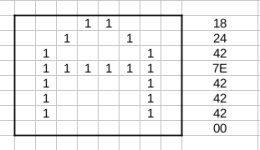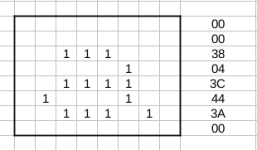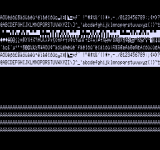The one with Japanese kana was the original version and is identical to the Model III. I don't know at what point they switched to the "international" version. The dividing line may be pretty fuzzy. Might be that most 4P's have the international.
I believe the original character generator ROM is labelled 8044316 while the "international" version is 8044316A.
Those are both Model III chargens. The 8044316A came out in the first half of 1981. It has a revised katakana font (but no changes to which char is which).
Early Model 4 systems came with an 8044316A, but the new 8049007 was already in production by December 1983.
Meanwhile, in Europe, the 8049000 had been used in Belgian Model III systems in 1982, and had many of the Latin characters that came to the U.S. in the 8049007.
Some trivia: the 8049007, the only character generator designed for the Model 4, has an Ä (A with diaresis) in the zero position, while all the Model III generators wasted that spot on a redundant space character. The reason for that is that the Modell III hardware more or less required a blank be there.
Recall that on the Model I, when the CPU and the video redisplay hardware tried to access video RAM simultaneously, the CPU won and a glitch in the redisplay would occur, with one line of a character cell glitching to black. This is lovingly and accurately recreated in George's emulator. On a Model III, this problem was much reduced, but persisted in the leftmost columns of the screen. The thing is, on a Model III, a glitched line of a character doesn't exactly glitch to black. What happens is that when the redisplay hardware tries to read a character from video RAM and loses to a competing read by the CPU, the byte vale zero is returned, and then a line of character zero is drawn. Thus, if you use a chargen that doesn't have a blank in character zero, then instead of lines glitching to black, they'll glitch to lines of character zero, with some white pixels. This would look much worse than the glitching to black. On a Model 4, the glitching was eliminated, and the whole 8-bit character set could be filled.





